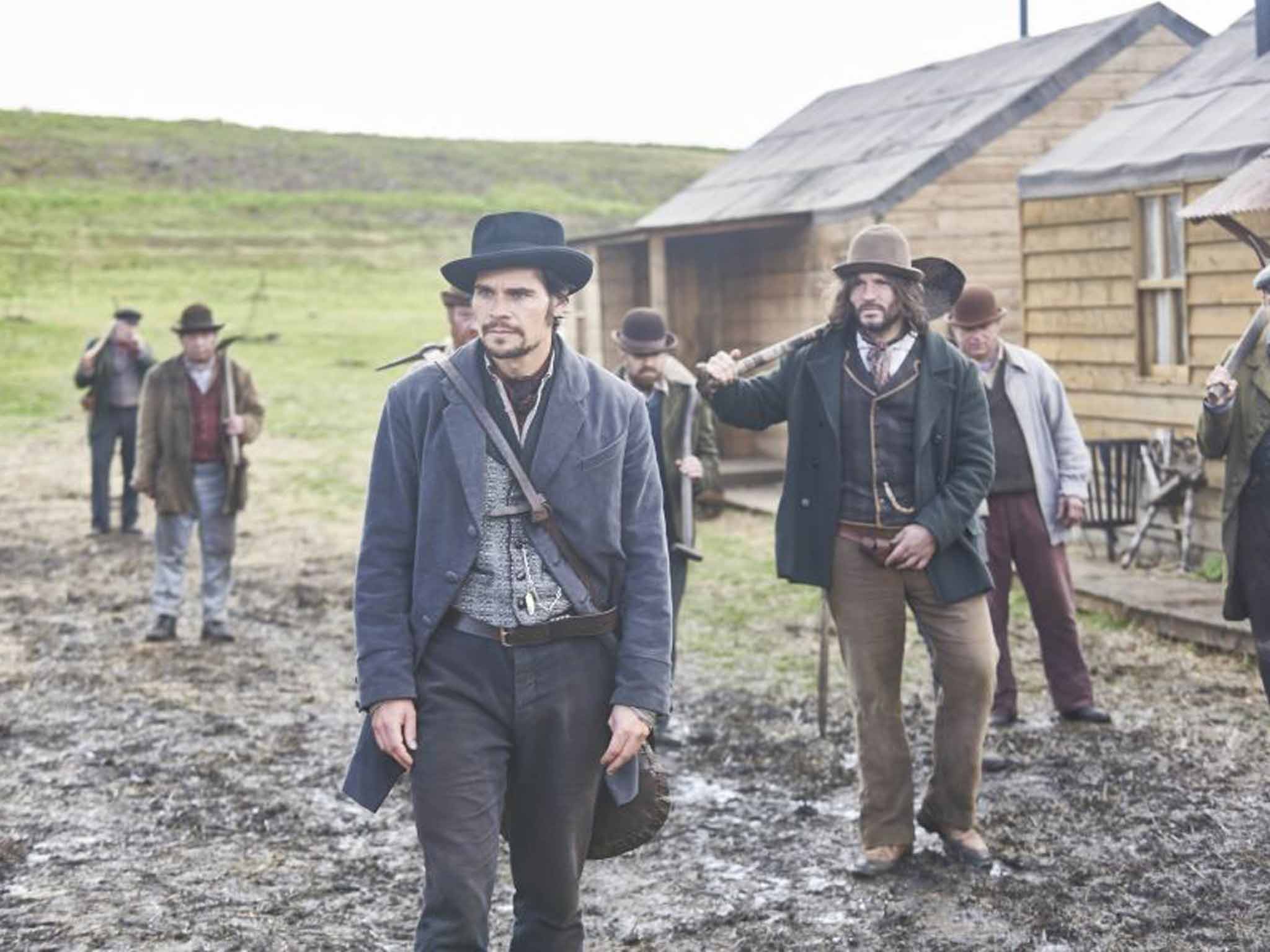The true story of the railway workers’ shanty towns that inspired ITV’s ‘Jericho’
The rough glamour of new series 'Jericho', about building a Victorian viaduct in Yorkshire, is (quite) true to life, says David Barnett, but it misses a trick with 'Batty Wife Hole'

Across the hills and valleys of Yorkshire you will see the vast viaducts, testimony to the industry and invention of the Victorian engineers who were tasked with connecting the nation's burgeoning rail network across this beautiful yet unforgiving landscape.
But these huge stone structures with their distinctive arches didn't spring whole from the architect's drawings; they were the result of years of back-breaking labour in harsh conditions that claimed many lives.
Now the ITV period drama is casting a light on the people who built the viaducts in the post-Industrial Revolution years, and the astonishing temporary towns that sprang up to accommodate them.
Jericho, of course, is drama, centred on the “community that will live, thrive and die in the shadow of the viaduct they've been brought together to build”, with a cast of characters including Hans Matheson's “handsome and enigmatic navvy”, Jessica Raine as a “widowed and penniless” woman “shunned by society”, and Clarke Peters as an “experienced African-American railwayman”.
But it is quite faithful to an almost forgotten slice of history that saw, for a few years in the 1870s, the breathtaking scenery of the Yorkshire Dales transformed into a series of what were, essentially, frontier towns as harsh, tough and sometimes lawless as anything in the Wild West.
There were several shanty towns that built up around viaduct construction projects at that time, given evocative names such as Sebastopol and Inkerman, in reference to the Crimean War, biblical appellations such as Jerusalem and Jordan, and even Belgravia – which is thought to have housed some of the more affluent of the workers who had to spend time near the build sites.
And there was indeed a Jericho, though it is thought the TV series is based more on the shanty town that built up around the Ribblehead Viaduct – in reality given the name Batty Wife Hole, after a stream that emerged from the limestone landscape, in which, so one story goes, a man named Batty drowned his wife following a drunken row. The spot became more widely known as Batty Green.
And while we might draw a direct lineage between those settlements and the portable cabins that line motorways for months at a time to house maintenance workers today, they were for all intents and purposes proper working towns.
Consider this from Frederick Smeeton Williams's 1888 book The Midland Railway, Its Rise and Progress, A Narrative of Modern Enterprise: “There were also the shops of various tradespeople, the inevitable public-houses, a neat-looking hospital, with a covered walk for convalescents, a post office, a public library, a mission house, and day and Sunday schools.”
Sounds almost idyllic. Williams goes on: “But, despite all these conventionalities, the spot was frequently most desolate and bleak. Though many of the men had been engaged in railway-making in rough and foreign countries, they seemed to agree that they were in 'one of the wildest, windiest, coldest, and dearest localities' in the world.”
Robert White is the senior historic environment officer at the Yorkshire Dales National Park, and he says that, thanks to the 1871 census which occurred in the early days of the construction of the Ribblehead Viaduct, we can glean a lot about life in the Batty Green shanty town.
“We know there were 74 buildings there, and a population of 342,” he says. “Workers and their families came from all parts of the country – there are 34 different counties of origin listed in the 1871 census.”
Construction took around six years, during which time children were born and people died. “There would have been the usual accidents and injuries,” says White. “But there was also a smallpox outbreak there as well.”
And with a growing population – said to be at around 2,000 at its peak – there was inevitably going to be trouble. “The nearest established towns were Ingleton and Settle, which were probably far enough away not to be bothered by Batty Green, but there were certainly letters written to newspapers by residents who were shocked at the shanty towns.”
Indeed, the towns provided fodder for the press at the time. A reporter from the Daily News found Batty Green to be “dispiriting, shiftless, unhomely, ramshackle, makeshift”. The 1871 census records the presence there of a policeman, 26-year-old Scottish bobby Archie Cameron, seconded to Batty Green to keep a semblance of law and order.
Construction of the Ribblehead Viaduct by the Midland Railway began in 1869 and it was opened in 1875; then the pre-fabricated buildings provided by the railway company were removed, and Batty Green melted away.
White says: “The site is now a scheduled monument. You can see some earthworks and some of the brick-built structures to remind us of this fascinating period, but the town itself is gone.
“ITV's Jericho might be bringing the old viaduct shanty towns back to life, but the on-screen travails can probably barely compare to the bleakness and drama of the reality of those who worked to connect Britain's railways.”
'Jericho' is on Thursdays on ITV at 9pm
Join our commenting forum
Join thought-provoking conversations, follow other Independent readers and see their replies
Comments